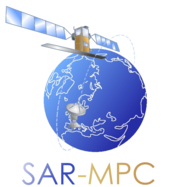
Product performances
This page presents relevant documentation for end-user either to assess the performance of the Sentinel-1 mission instrument and products.
Calibration / Validation / Inter-Comparision / Cross-Calibration
The SAR-MPC oversees the calibration of the products from the Sentinel-1 mission in operations.
Each Sentinel-1 unit (A/B/C/D) is calibrated independently of each other, ensuring compliance with the product performance requirements (refer to the product definition document).
Inter-comparison of products from the different units is usually performed to assess quality. However, we do not perform any cross-calibration (neither for geometric, nor radiometric, nor other key performance indicators). This might lead to different performances from one unit to the other.
Users should then expect homogeneous performances while comparing products from a given unit (A/B/C/D), but differences can be observed while comparing products from different units, however still matching the performance requirements.
Annual Performance Reports
Those reports provide the status of Sentinel-1 mission instrument and product performance for the successive years of operations.
They are available in Sentiwiki in the [Annual Reports] section
Annual Performance Report 2024
Annual Performance Report 2023
Annual Performance Report 2022
Annual Performance Report 2021
Annual Performance Report 2020
Annual Performance Report 2019
Annual Performance Report 2018
Annual Performance Report 2017
Annual Performance Report 2016
Annual Performance Report 2015
N-Cyclic Performance Reports
The N-Cyclic Performance Reports provide information on product performance on period covering currently 4 cycles. Those reports are available in the Sentinel-1 SAR Document Library here: Sentinel-1 SAR Document Library
They provide interim reporting on product performance between the publication of annual performance reports that contain much more information. Once an annual performance report is available, the N-Cyclic Performance Report covered by the year are then unpublished.
Quality Disclaimers
A set of Quality Disclaimers are available on this web site in the Quality Disclaimers section.
The quality disclaimers provide description of the product performance degradation together with information on how to segregate the impacted products (by SAR unit, acquisition time, generation time, etc).
The quality disclaimers contain a "percentage of degradation" of the impacted products. This percentage is an empirical estimation of the level of degradation, considering that a given degradation may have different impact on different users and their specific applications. It does not necessarily relate to the amount of products degraded. The following rule of thumb is used:
- 0 % degradation corresponds to no degradation. In fact, in that case there is no quality disclaimer.
- 1% is a degradation on meta data that can be overcome by the user, even if it is not convenient. The integrity of data is not affected.
- 1% can be as well a very a local degradation of the product data due to residual Radio Frequency Interference (RFI), that may prevent user to interpret the product in the affected areas. However, the presence of RFI is considered as useful information for some categories of users.
- 33% is used for L2 OCN data which nominally have three main components (OSW, OWI and RVL). This corresponds to a degradation of one third of the data, and applies for a large degradation of one of the three components of the L2 OCN products.
- 50% is a degradation that may impact the complete extent/coverage of the products, but not necessarily all users. For instance, the quality disclaimer 30 is on degradation of noise vector annotation, with impact on the complete coverage of the products that may impact certain applications, but not all of them.
- 100 % degradation corresponds to a complete degradation making the product useless for any application. It that case the product is removed from Sentinel-1 product catalogue.
Certain quality disclaimers correspond to reporting of specific product degradation on a given period. For instance, invalid annotation of burst ID on TOPS SLC products on a given cycle or product products containing residual RFI in a given month. In those cases, in addition to the "percentage of degradation" field, the quality disclaimer also contains the percentage of impacted products with respect to the total number of products of same processing level in the same period.
Ad hoc performance reports
Sentinel-1A Analysis of performances after collision on 23rd August 2016
Sentinel-1A Antenna Failure - Anomaly Characterization Report
Sentinel-1A TOPS radiometric performance refinement